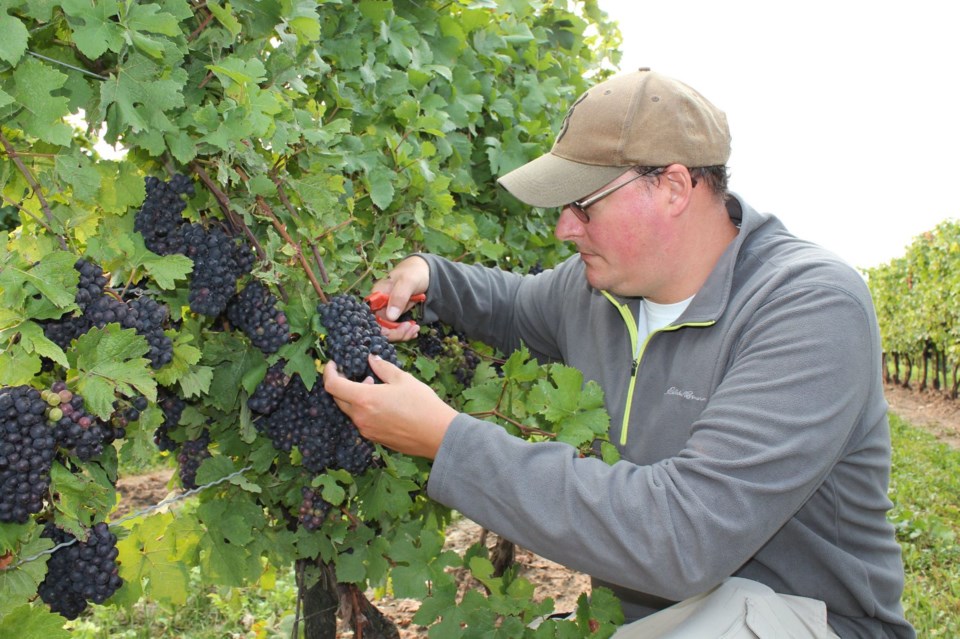NEWS RELEASE
BROCK UNIVERSITY
*************************
Although they are well-versed in overcoming fluctuations and uncertainty from one growing season to the next, Niagara’s grape growers are facing a unique set of challenges this year due to the COVID-19 pandemic.
To address some of those challenges, Jim Willwerth, Senior Scientist at Brock University’s Cool Climate Oenology and Viticulture Institute (CCOVI), recently partnered with the Grape Growers of Ontario (GGO) to host a webinar on the Economics of Crop Management During COVID-19.
“The entire world is dealing with the uncertainty of this global pandemic,” says Willwerth. “I am glad to be able to provide support to the grape growers by discussing crop management and ways to improve efficiency in the vineyard during this challenging time.”
Since grape harvest season is still a few months away, Ontario grape growers aren’t in the same situation as farmers who have to determine what to do with their early season crops due to lack of available workforce or changing demand.
The immediate challenge for grape growers lies in safely and cost-effectively completing critical spring vineyard work while also adapting to new physical distancing protocols. The mandatory 14-day isolation period in place for seasonal workers coming to Ontario farms from outside of Canada also creates challenges. That two-week delay, combined with having to logistically spread out workers to ensure a safe operation, means there may be less hands on-deck to get the work done.
With many operations already working on tight margins, growers have to determine what key vineyard practices need to be maintained — and which can be scaled back, delayed, or forgone altogether to cut costs. And, as grape vines are perennial plants, Willwerth says those decisions are crucial not only to this year’s harvest, but to future harvests, as well.
“There’s no one-size-fits-all solution, and it’s important to ask questions about your vineyard and the individual block within them,” he says.
Willwerth suggests that growers put the focus on their best vineyard blocks and aim to reduce labour-intensive activities (such as manual leaf removal) and use more mechanization where possible.
Integrated pest management is still critical, he stresses, as is completing major canopy and crop management tasks. Pruning, tying, trunk replacement and other winter injury mitigation is also important, as is training young vines to prepare for the growing seasons to come.
Growers are also worried about what it will mean for their operations if COVID-19 restrictions are still in place when harvest season rolls around this fall, he says.
“But as growers, you always deal with uncertainty and risk management, this is just another level,” Willwerth says. “So be positive and work together, and you can navigate this challenge, too.”
Providing timely research and support to the industry is a critical part of CCOVI’s mandate. In addition to this recent webinar, the institute also produced a viticulture webinar series with the GGO. The videos can be viewed on CCOVI’s website, with more videos planned for later this year.
"The Grape Growers of Ontario remain committed to keeping our members engaged and informed and we thank CCOVI and Dr. Jim Willwerth for helping us deliver an educational webinar and collaborative Q&A session on the economics of crop management during COVID-19,” says Matthias Oppenlaender, Chair of the GGO. “We look forward to bringing more engaging content to our members in the coming weeks and months."
*************************



